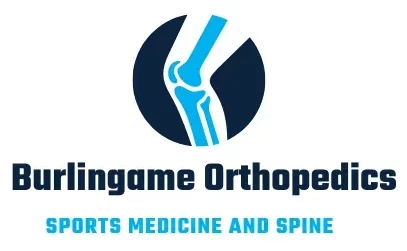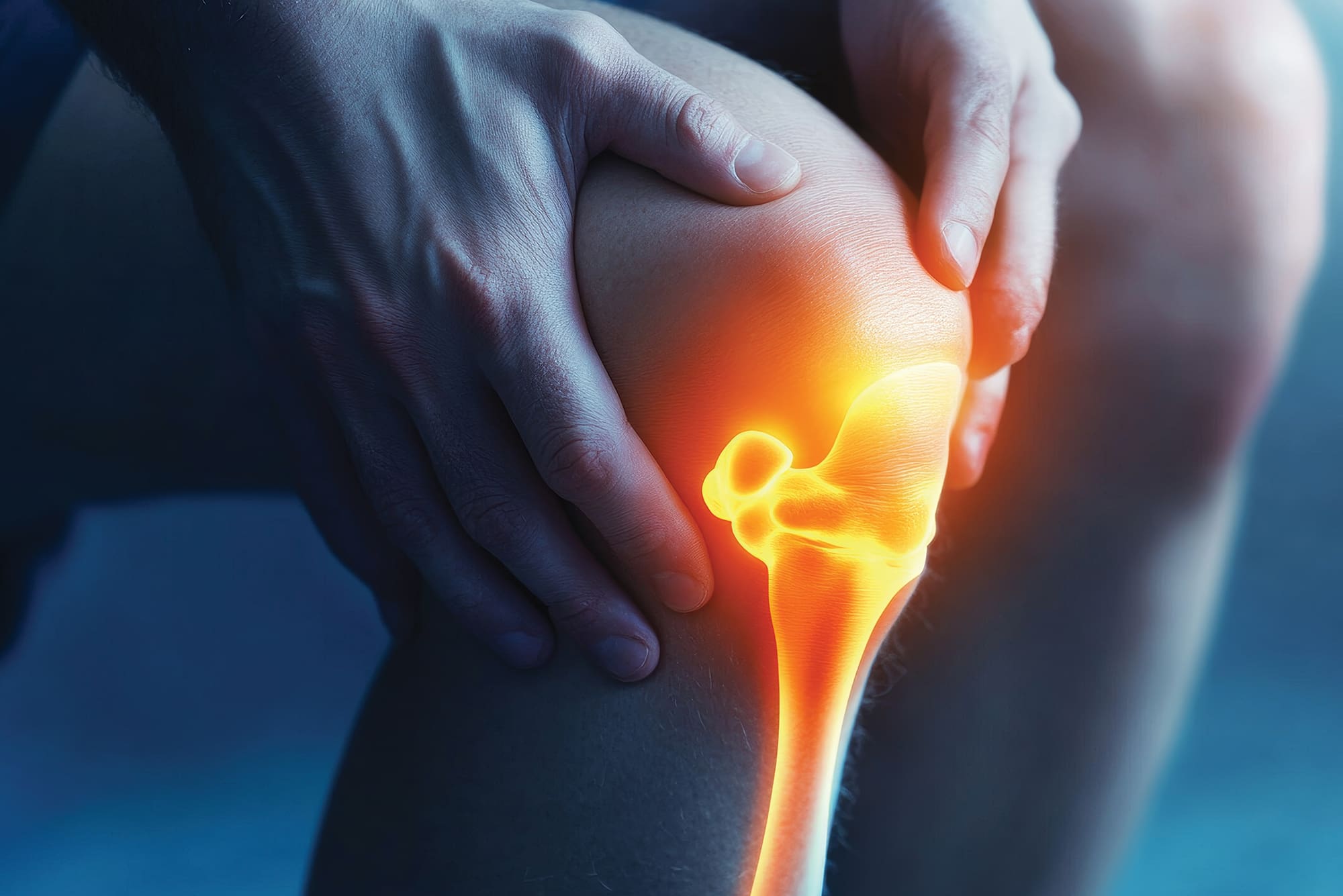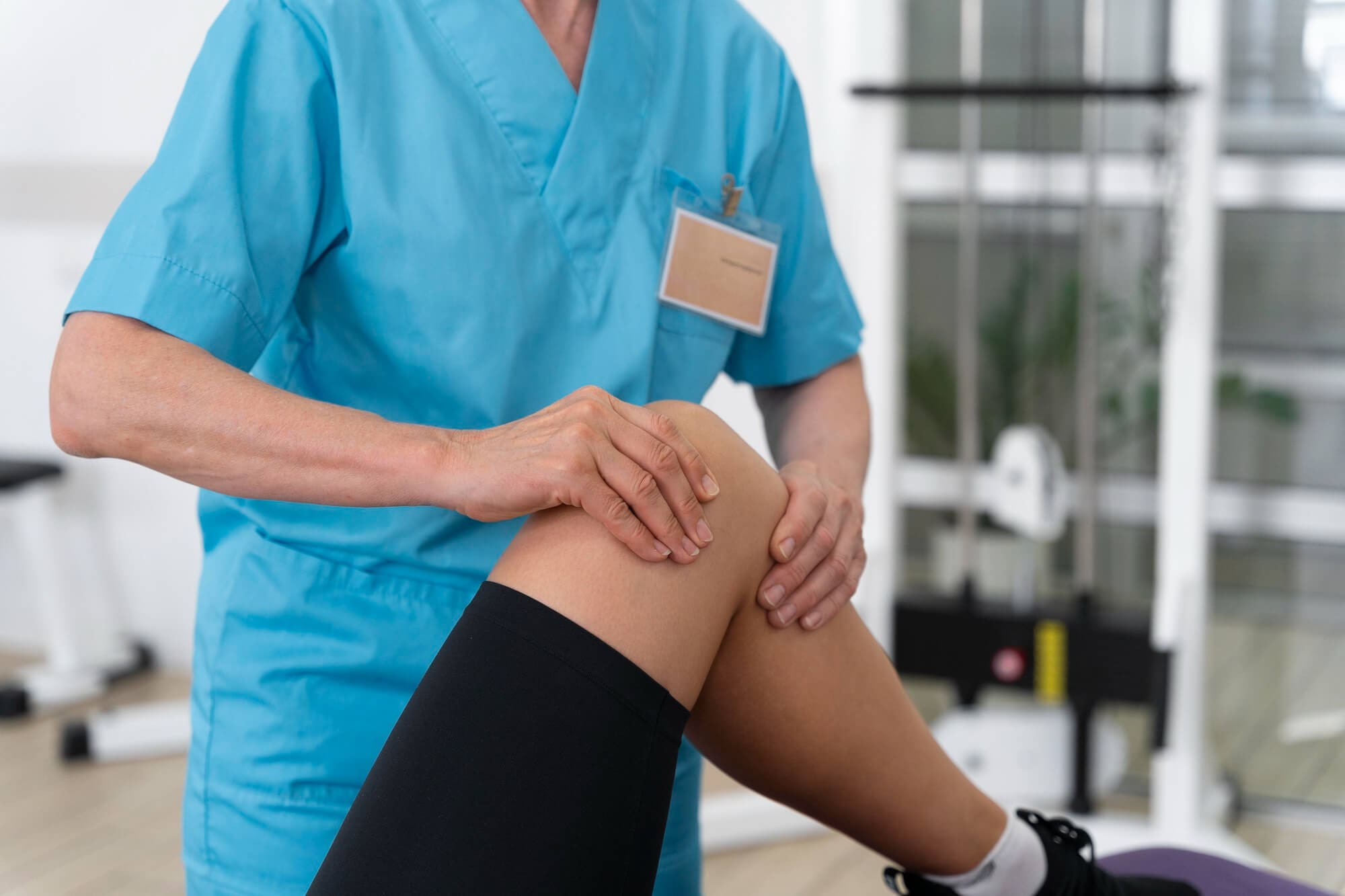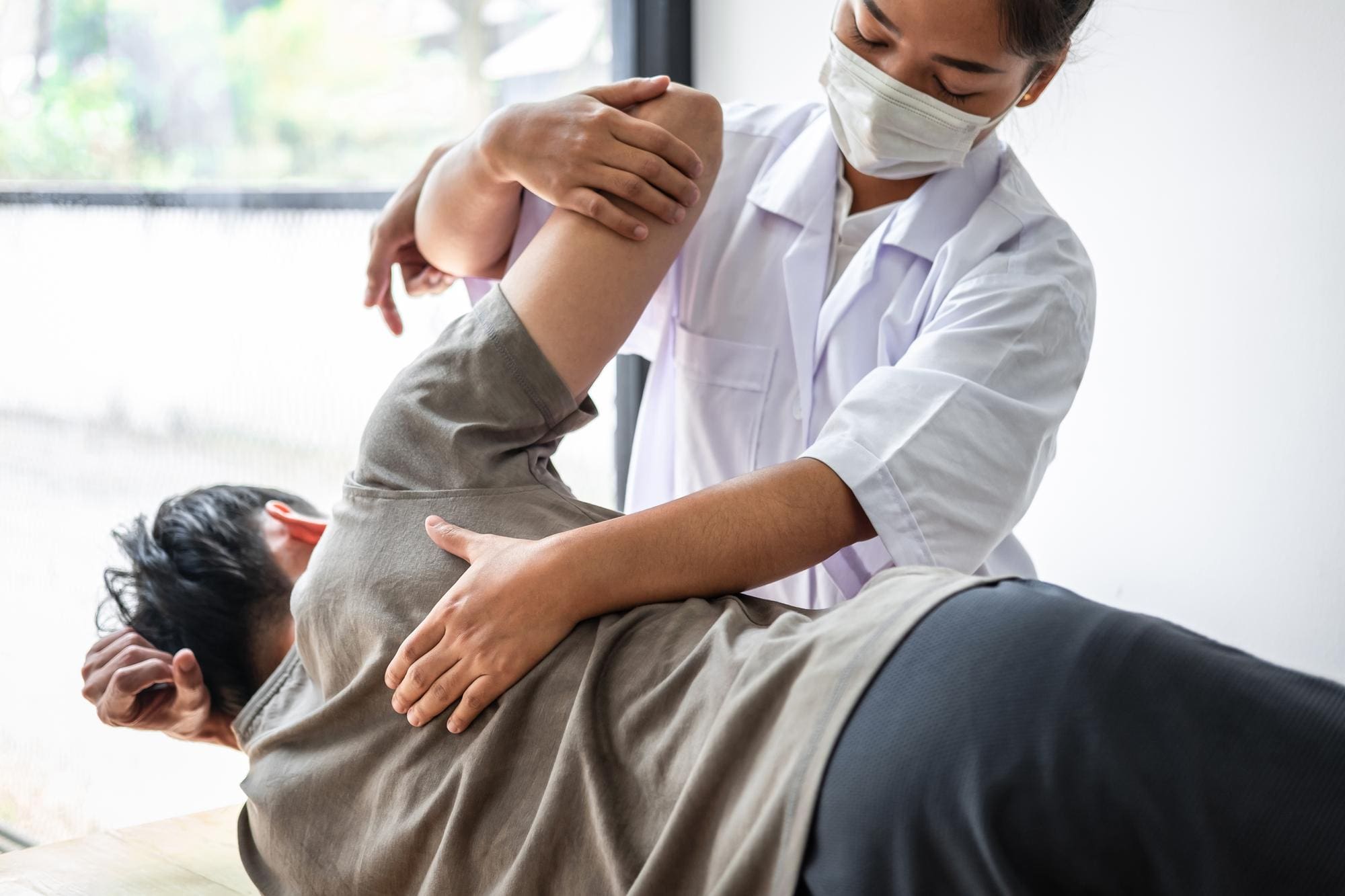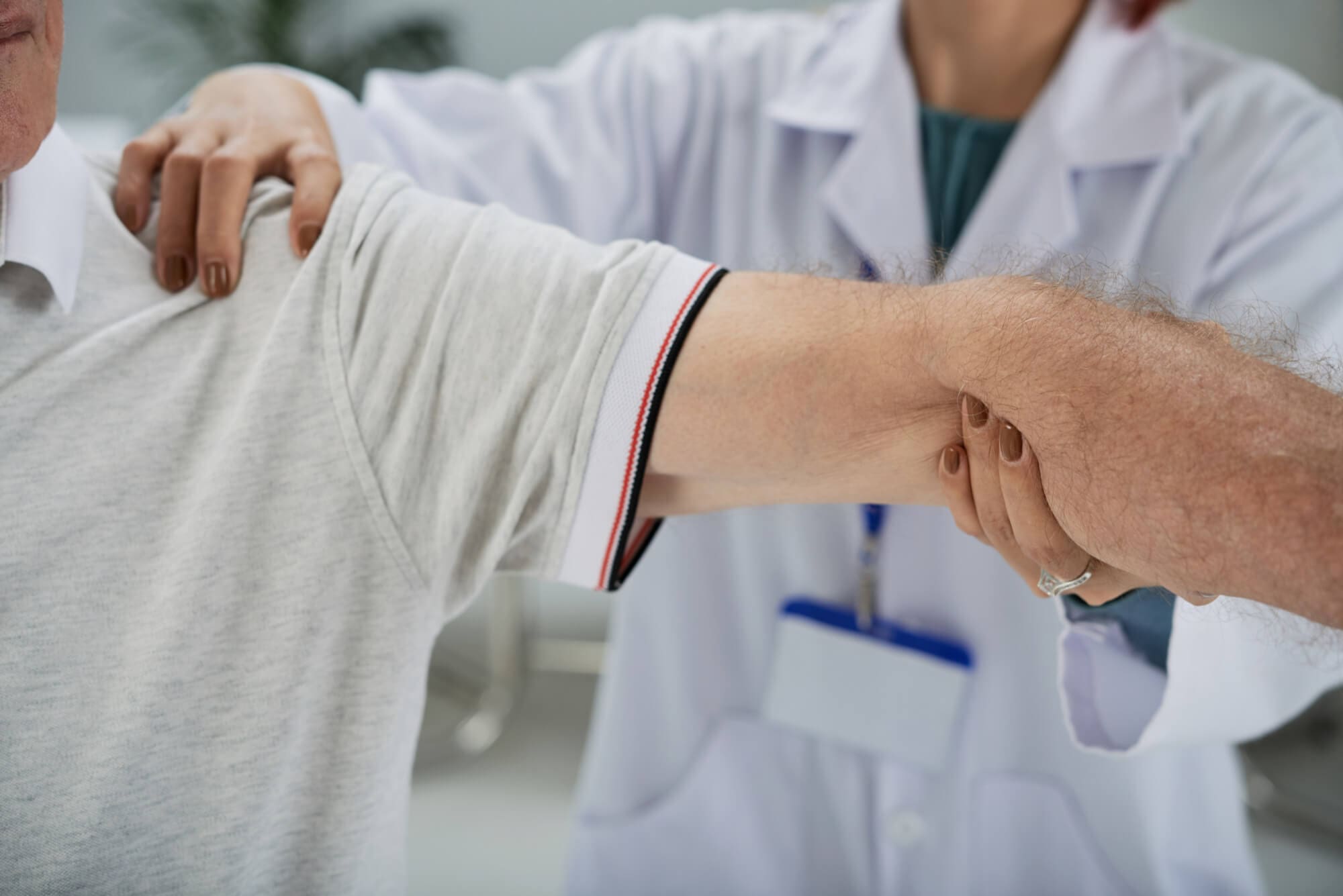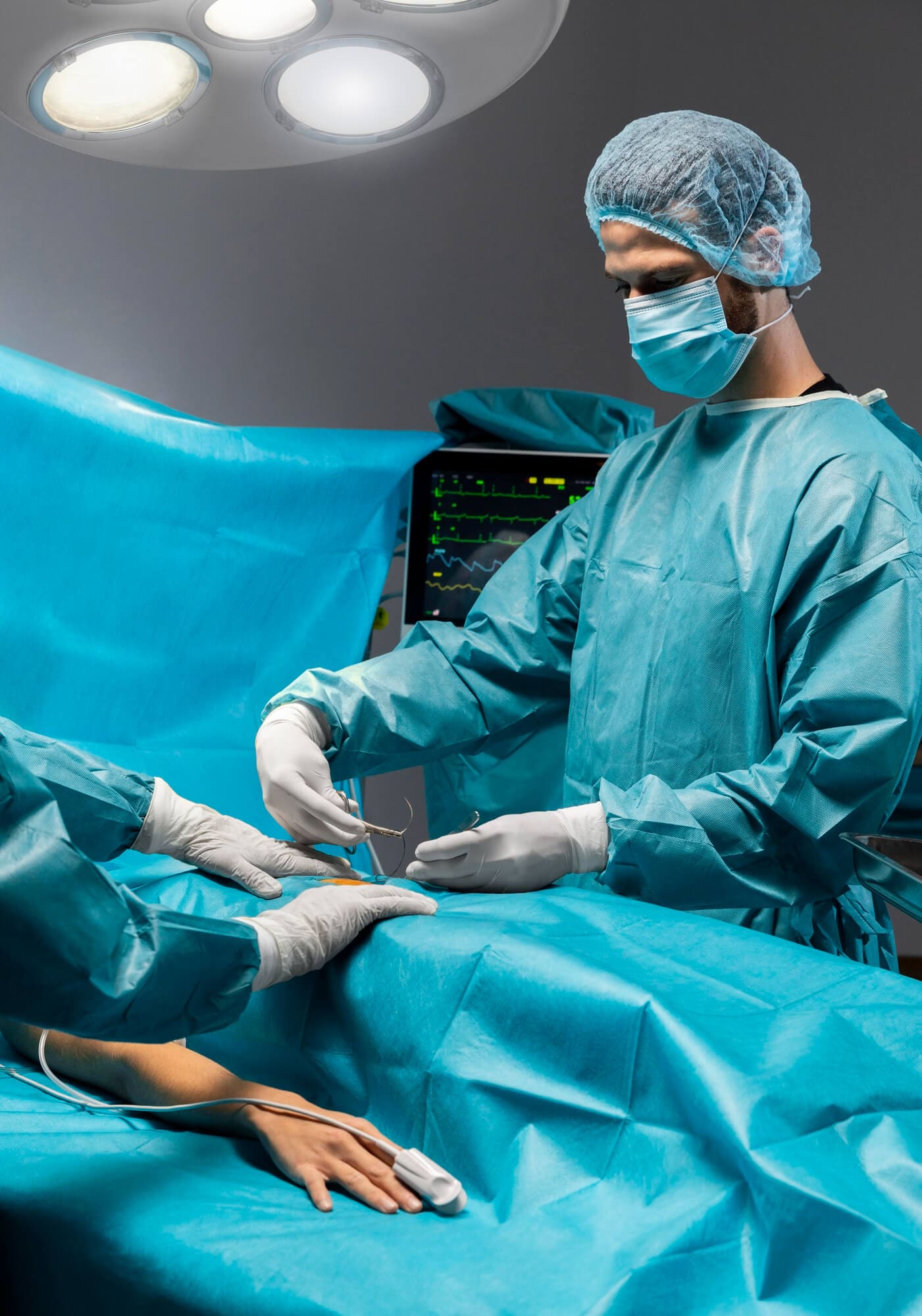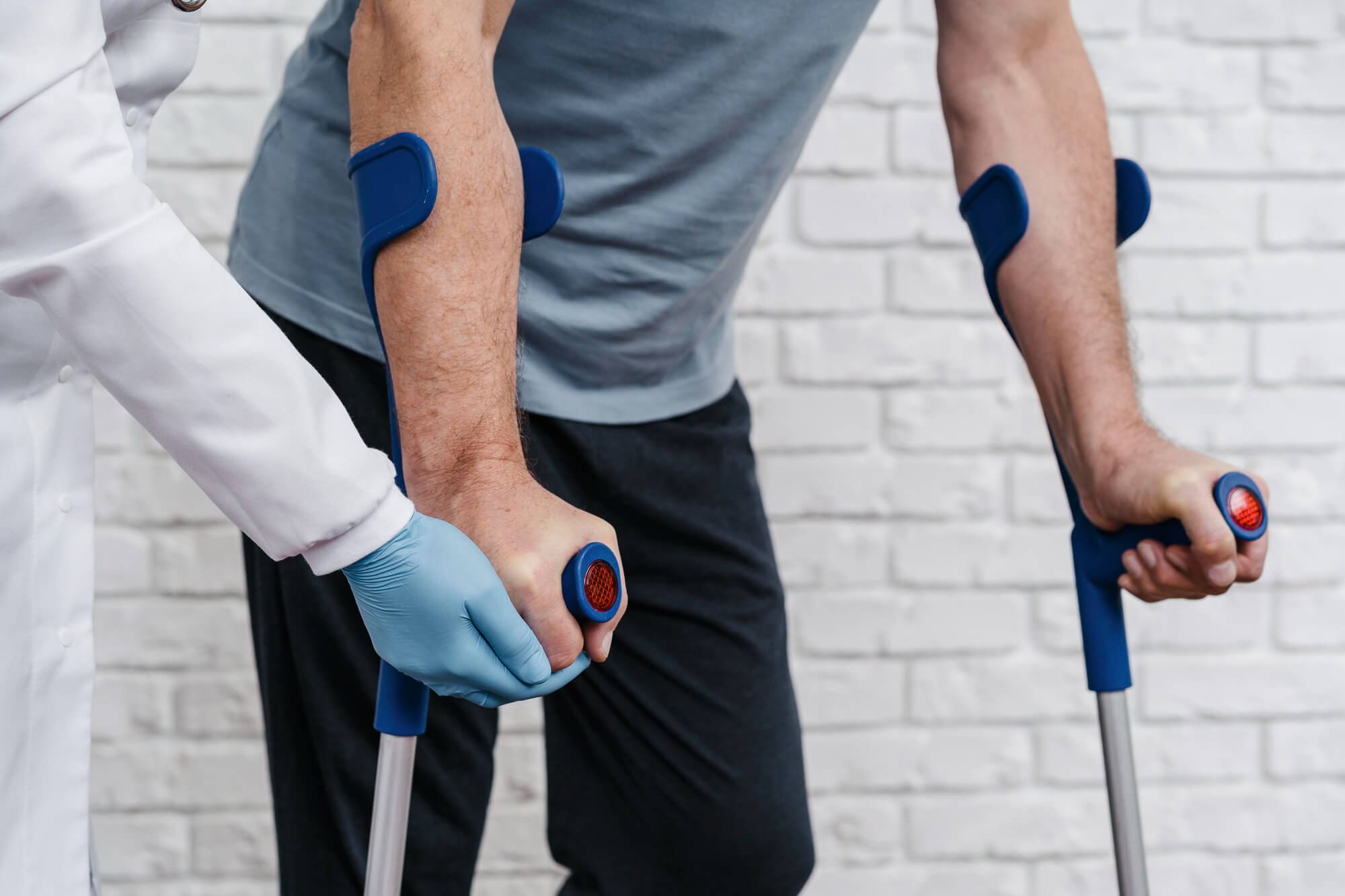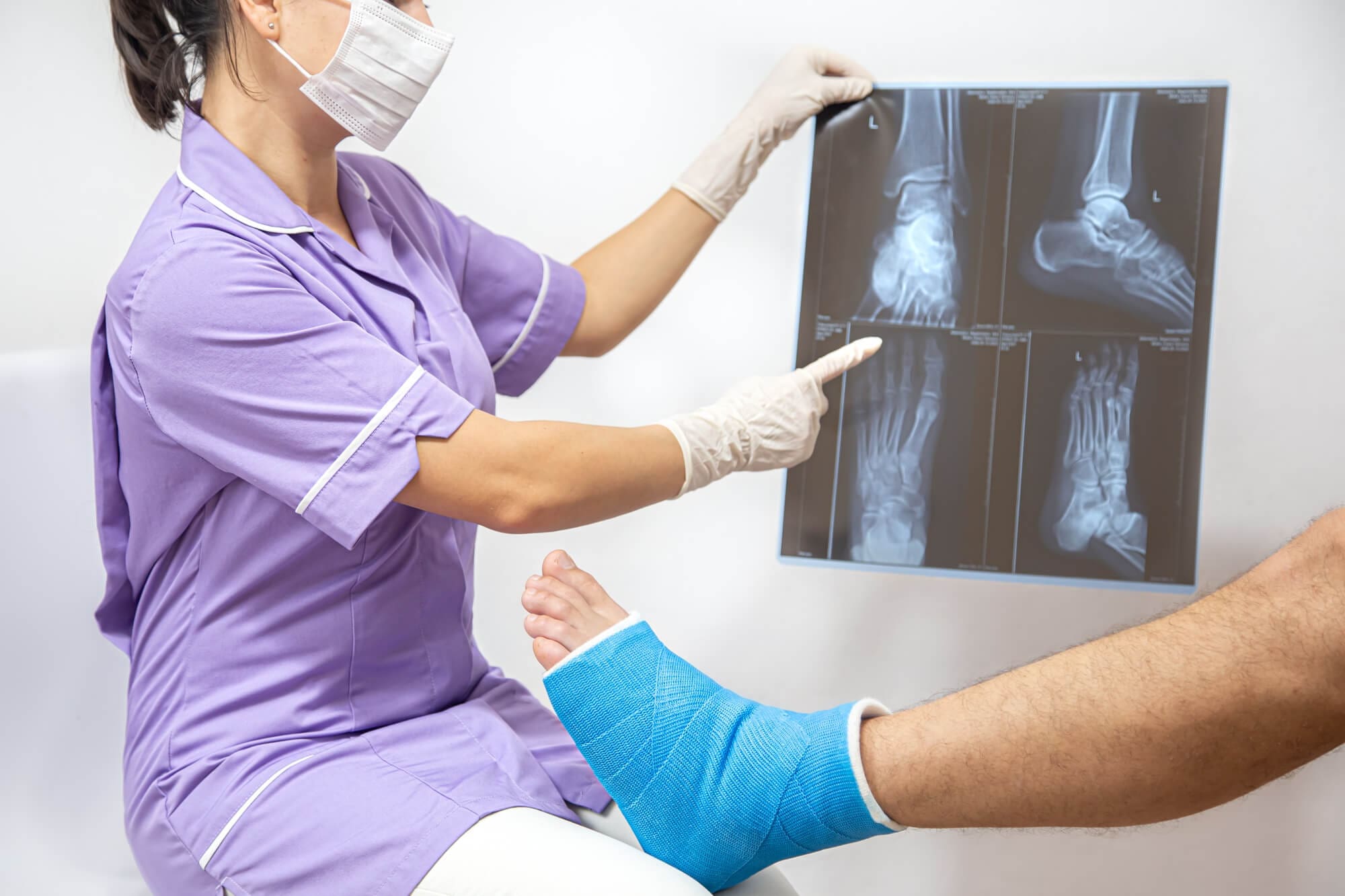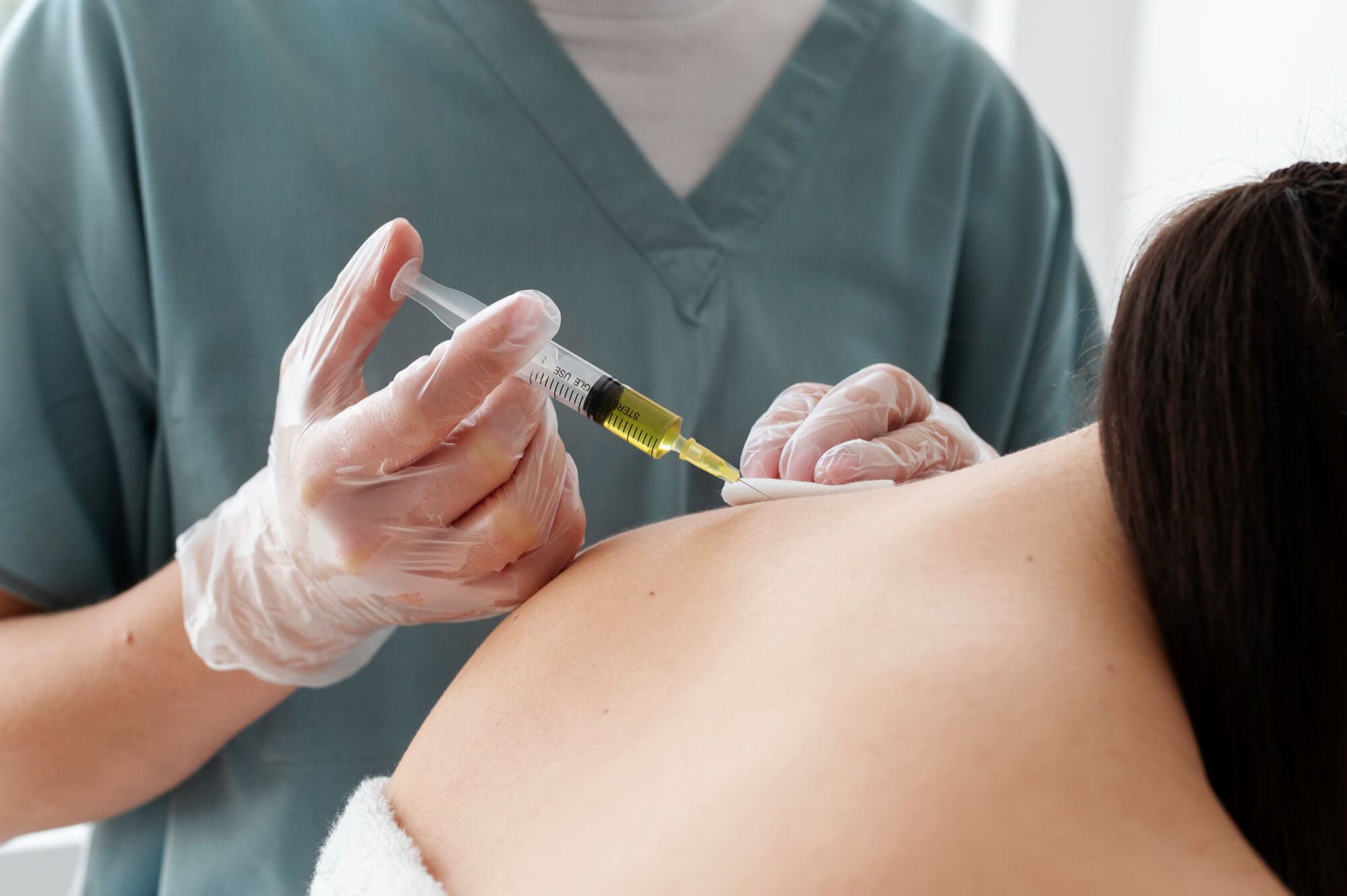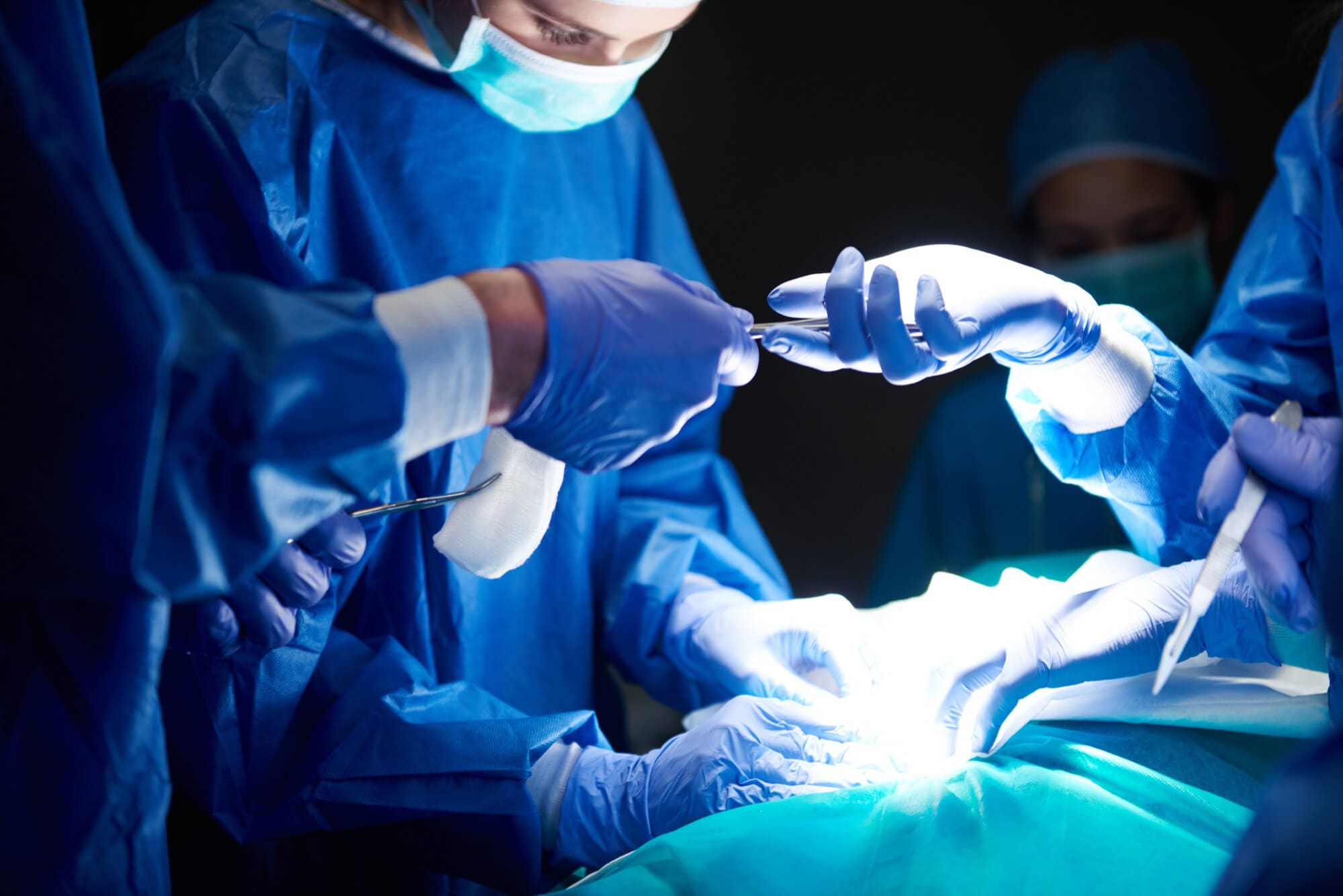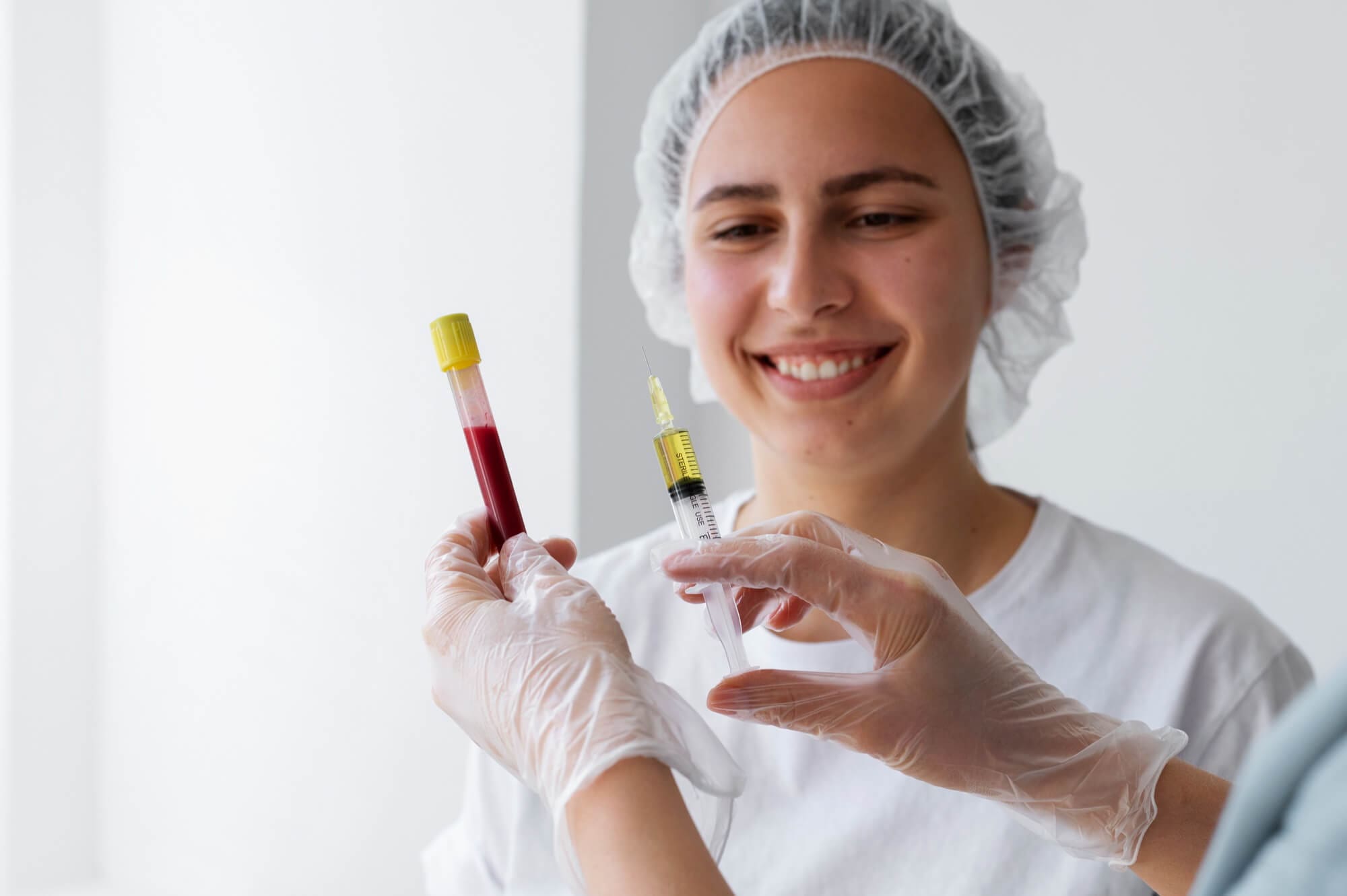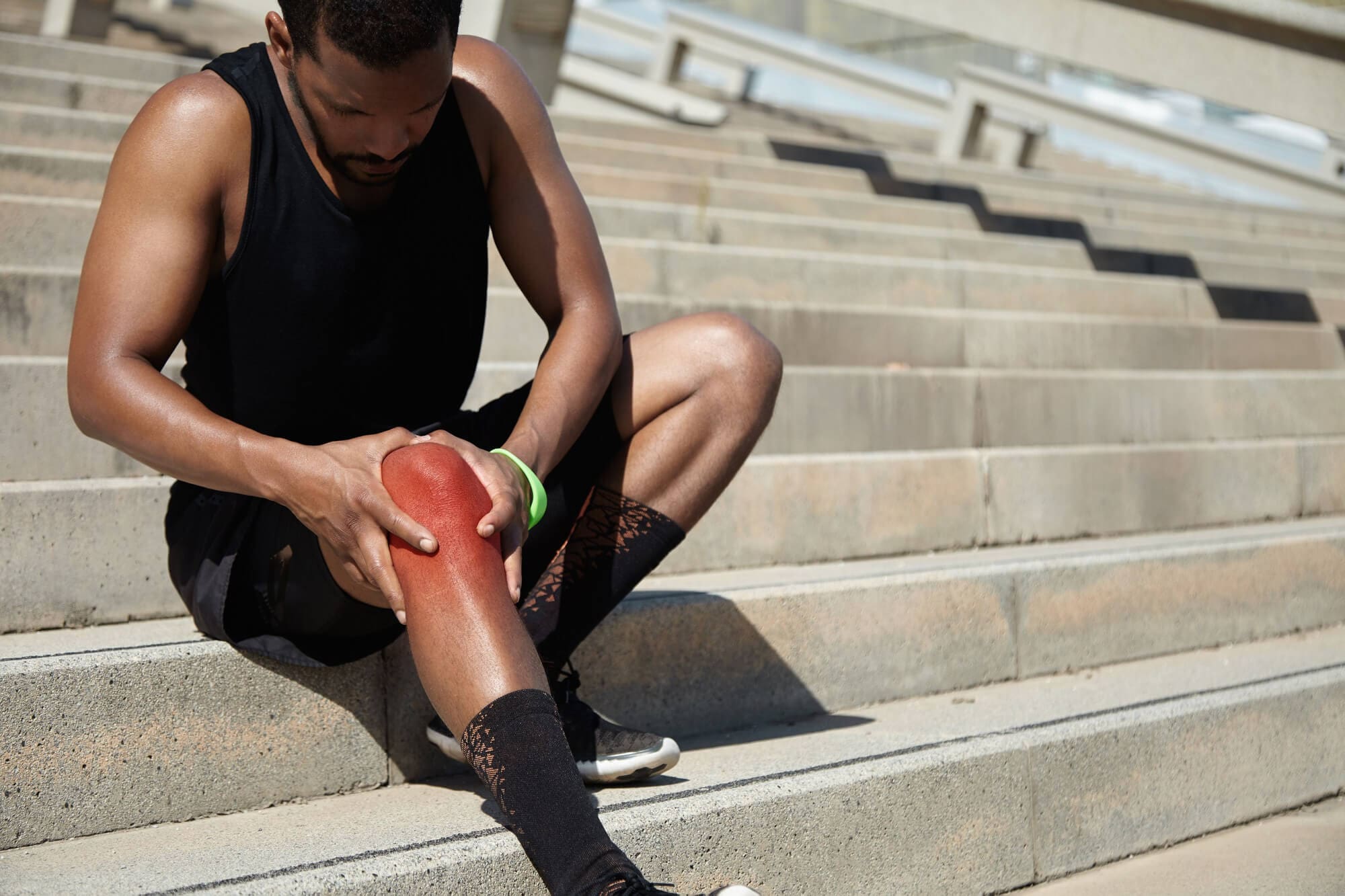
Knee pain can make everyday activities challenging, whether you’re an athlete, an active individual, or simply trying to move comfortably.
At Burlingame Orthopedics, our board-certified, fellowship-trained surgeons provide expert care to diagnose and treat knee pain. We offer both non-surgical and surgical solutions tailored to your needs, ensuring you get back to doing what you love as quickly as possible.
With in-office X-rays and same-day or next-day appointment availability, relief is closer than you think.We offer knee pain treatment at our orthopedic and sports medicine clinic in Burlingame, CA, call (650) 692-1475 or request an appointment online.
Understanding the Knee: Structure and Function
The knee is one of the largest and most complex joints in the body, playing a crucial role in movement and stability. It consists of several key structures:
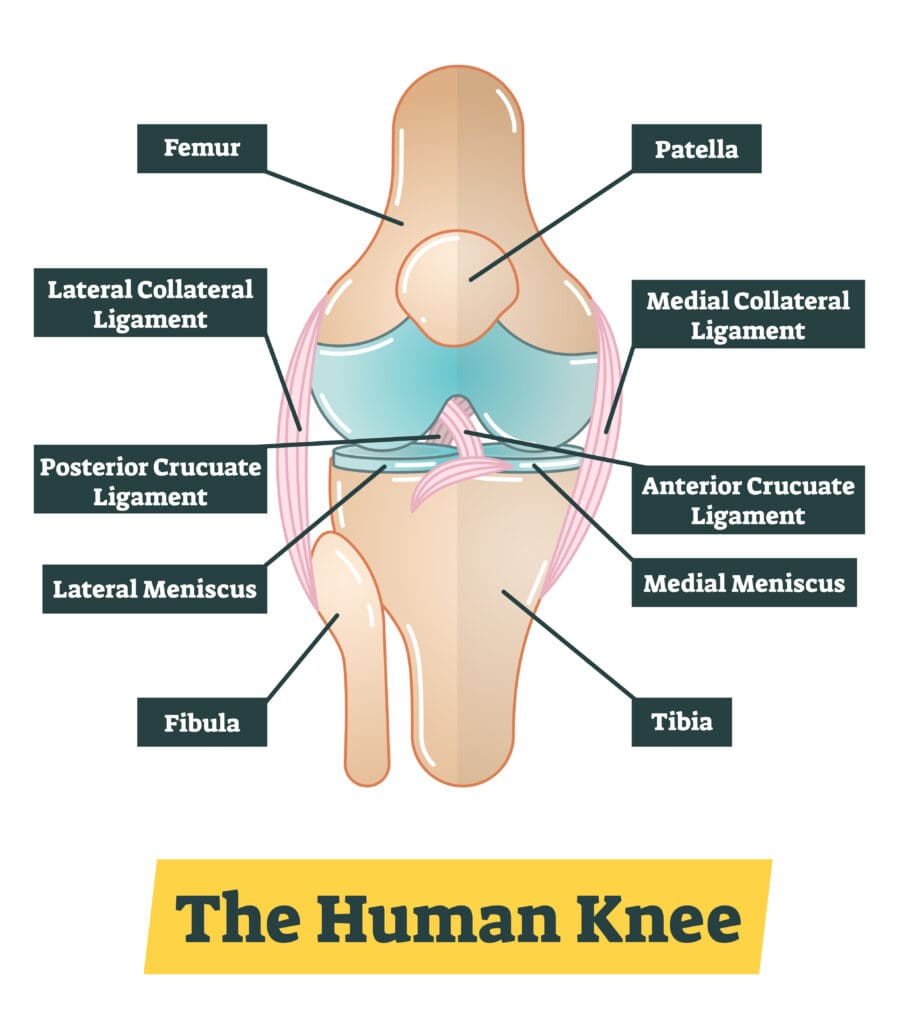
- Bones: The knee joint is where the femur (thigh bone), tibia (shin bone), and patella (kneecap) meet.
- Cartilage: The menisci act as shock absorbers, while articular cartilage covers the ends of bones to allow smooth movement.
- Ligaments: The cruciate ligaments (ACL, PCL) and collateral ligaments (MCL, LCL) provide stability by connecting the bones and preventing excessive movement.
- Tendons: These connect muscles to bones, facilitating movement.
- Bursa: Fluid-filled sacs that cushion the joint and reduce friction.
Common Causes of Knee Pain
Knee pain can stem from various conditions, ranging from injuries to degenerative diseases. Some of the most common causes include:
Injuries
- ACL tears: Common in athletes, leading to instability and pain.
- Meniscal tears: Often caused by twisting motions, leading to swelling and stiffness.
- Cruciate ligament injuries: Damage to the ACL or PCL, affecting knee stability.
- Fractures: Direct trauma can break the kneecap or other knee bones.
- Patellar dislocation: When the kneecap shifts out of place, causing significant pain and difficulty moving.
- Osgood-Schlatter disease: A common knee injury in growing children, causing pain and swelling below the kneecap.
Degenerative Conditions
- Osteoarthritis: Wear-and-tear damage to the cartilage that cushions the knee joint.
- Rheumatoid arthritis: An autoimmune condition causing chronic inflammation and pain.
- Cartilage wear: Damage to the smooth surfaces in the knee joint, leading to discomfort and stiffness.
Other Causes
- Patellofemoral pain syndrome: Discomfort around the kneecap due to improper tracking.
- Tendonitis: Inflammation of the tendons from overuse or repetitive motion.
- Bursitis: Inflammation of fluid-filled sacs that cushion the knee joint.
- Overuse injuries: Common in individuals with repetitive knee strain, causing pain over time.
When to See an Orthopedic Specialist
If you experience any of the following symptoms, it’s time to seek professional care:
- Persistent pain despite rest and home treatments.
- Swelling, redness, or warmth around the knee joint.
- Stiffness or difficulty fully extending or bending the knee.
- Clicking, popping, or locking sensations.
- Knee instability or feeling like the knee might “give out.”
How We Diagnose Knee Pain
At Burlingame Orthopedics, we use a comprehensive approach to diagnosing knee pain, ensuring accurate treatment:
- Physical examination: Assessing movement, stability, and swelling.
- In-office X-rays: Immediate imaging to check for fractures and joint damage.
- Advanced imaging (MRI, CT Scan): When needed, we use advanced imaging to evaluate soft tissue injuries.
Non-Surgical Treatment Options
Many knee conditions can be treated without surgery. Our non-surgical solutions include:
- Physical therapy: Strengthening muscles and improving flexibility.
- Medications: Anti-inflammatory drugs and pain relievers to reduce discomfort.
- Injections:
- Cortisone injections: Reduces inflammation and pain in the knee joint by suppressing the immune response. Often used for arthritis and other inflammatory conditions, cortisone injections can provide relief for weeks or months, depending on the severity of the condition.
- PRP (Platelet-Rich Plasma) injections: A treatment that involves drawing a small sample of your blood, processing it to concentrate the platelets, and injecting it into the knee to promote tissue repair and reduce inflammation. PRP injections harness the body’s natural healing abilities to improve recovery from injuries and chronic conditions like osteoarthritis.
- Viscosupplementation: A treatment that involves injecting hyaluronic acid, a natural substance found in joint fluid, into the knee to improve lubrication and reduce pain. This therapy is commonly used for individuals with osteoarthritis who have not found relief from other conservative treatments.
- Bracing and lifestyle adjustments: To support healing and prevent further injury.
Surgical Treatment Options
When non-surgical methods aren’t enough, we offer advanced surgical solutions.
Minimally Invasive Arthroscopy
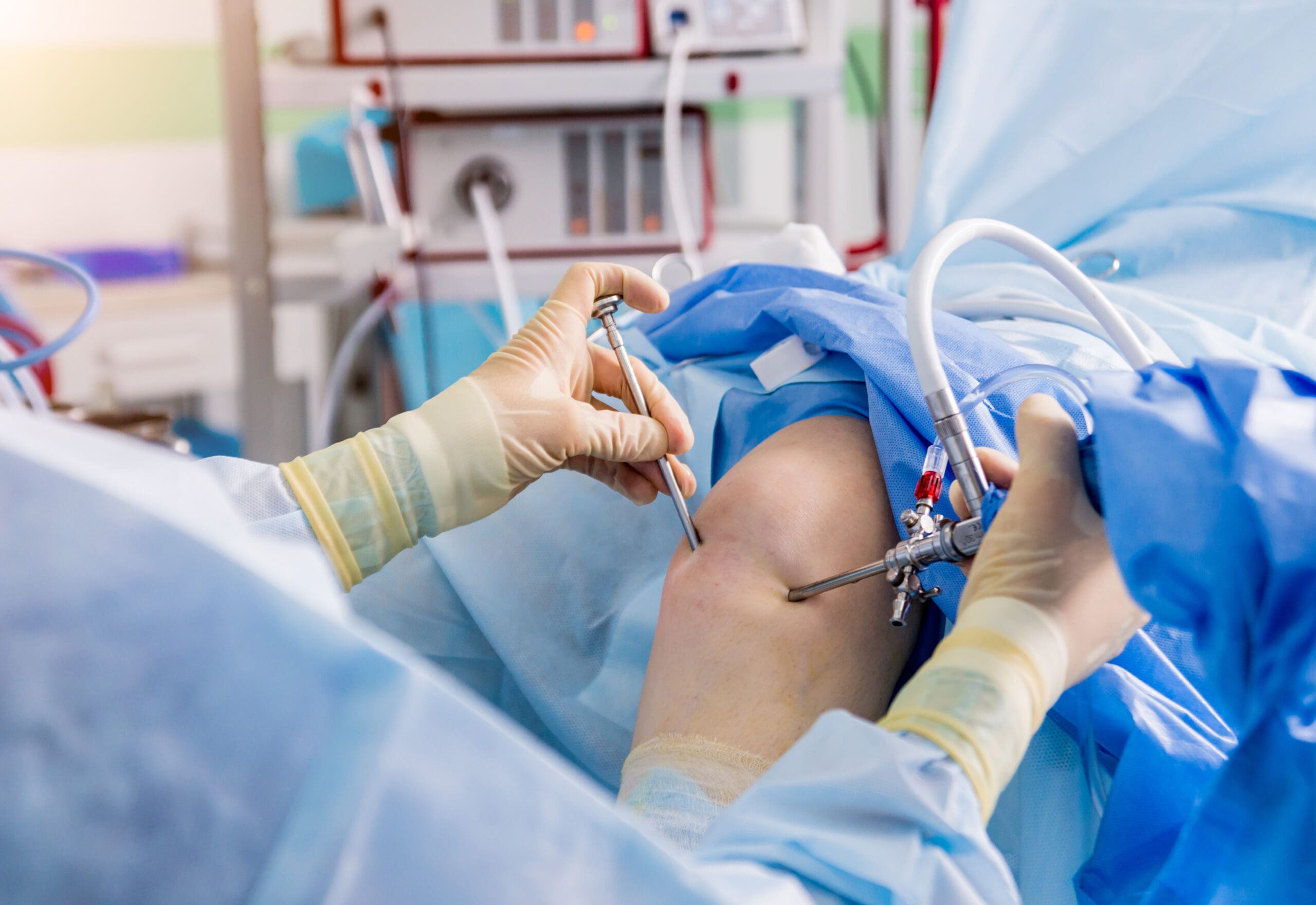
A surgical procedure that uses a small camera and specialized instruments inserted through tiny incisions to diagnose and treat knee problems such as meniscus tears, ligament injuries, and cartilage damage.
This technique minimizes tissue disruption, reduces pain and scarring, and leads to a faster recovery compared to traditional open surgery.
Quadriceps ACL Reconstruction & BEAR ACL Repair
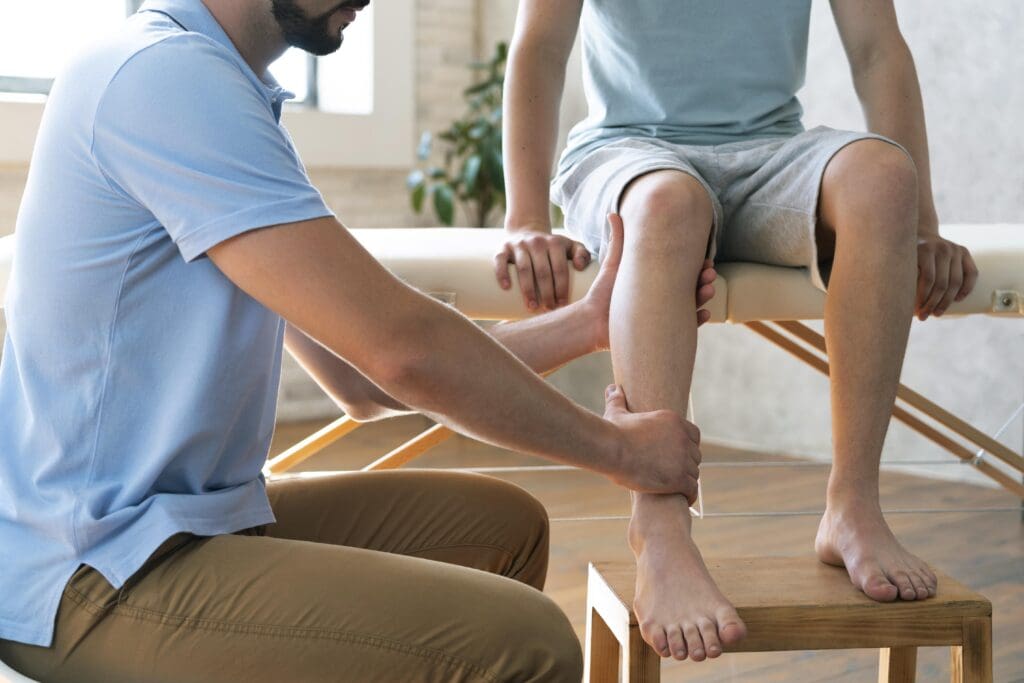
A procedure to restore knee stability following an ACL tear. Traditional ACL reconstruction involves replacing the damaged ligament with a tendon graft from the patient or a donor.
The BEAR (Bridge-Enhanced ACL Repair) technique is an innovative approach that utilizes a special absorbable implant saturated with the patient’s own blood to bridge the gap between the torn ends of the ACL.
This method stimulates natural healing, allowing the ligament to regenerate itself rather than requiring a graft from another part of the body.
Both techniques help restore knee function and reduce the risk of long-term instability.
Partial and Total Knee Replacement
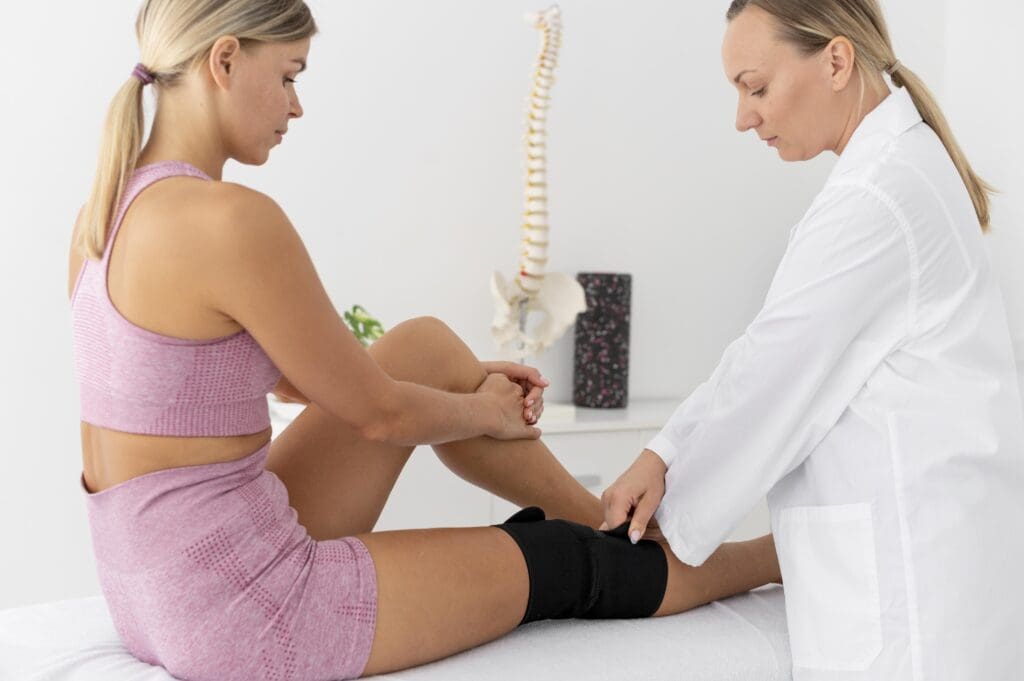
- Partial Knee Replacement: Suitable for localized arthritis, preserving more of the natural knee structure while replacing only the damaged portion of the joint.
- Total Knee Replacement: Recommended for advanced arthritis or severe joint damage, replacing the entire knee joint with durable implants designed for long-term function and mobility.
For more information on knee replacement surgery, read Knee Replacement Surgery.
Fracture Surgery
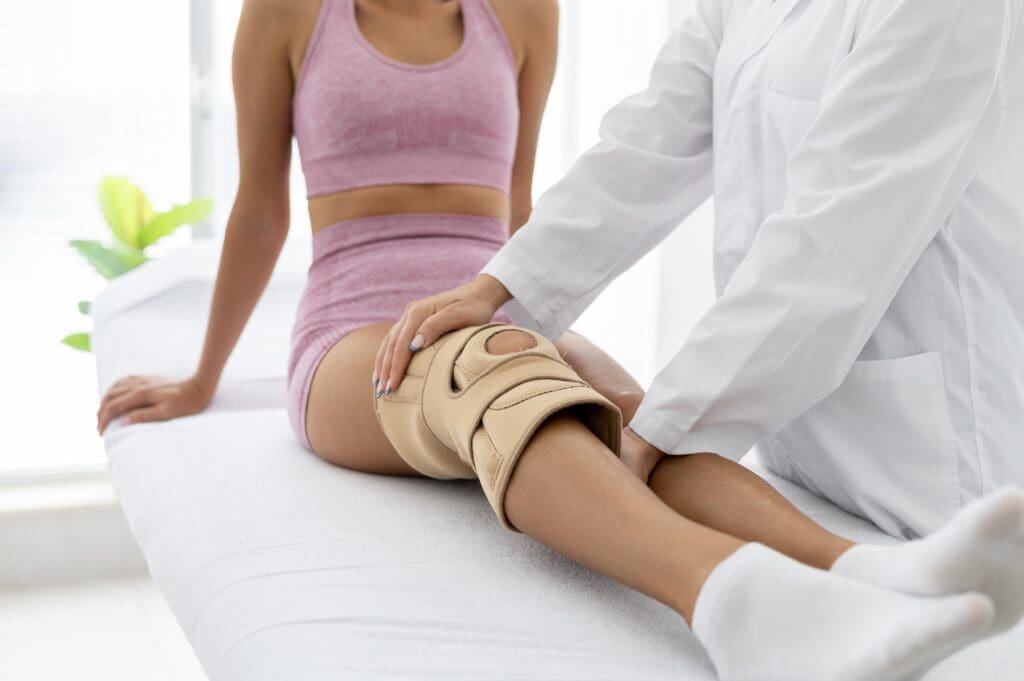
For complex knee fractures, surgical intervention may be required to realign and stabilize the bones. Our team uses minimally invasive fixation techniques when possible to promote faster healing and reduce complications.
Surgical vs. Non-Surgical Treatment
Treatment Type | Best For | Recovery Time | Key Benefits |
| Physical Therapy | Mild to moderate knee pain, overuse injuries | Weeks to months | Strengthens muscles, improves mobility |
| Medications | Inflammatory conditions, mild arthritis | Ongoing as needed | Reduces pain and inflammation |
| Injections (Cortisone, PRP, Viscosupplementation) | Osteoarthritis, tendonitis, chronic pain | A few days to weeks | Reduces inflammation, promotes healing |
| Minimally Invasive Arthroscopy | Meniscus tears, ligament injuries | 4-12 weeks | Faster recovery, less scarring |
| ACL Reconstruction or Repair (Quadriceps or BEAR) | Torn ACL | 6-12 months | Restores stability and function |
| Knee Replacement (Partial/Total) | Severe arthritis, joint damage | 6-9 months | Long-term pain relief, improved mobility |
Why Choose Burlingame Orthopedics?
- Expert Team: Fellowship-trained orthopedic specialists with decades of experience.
- Comprehensive Care: Non-surgical and surgical options to suit your needs
- Convenient Access: Same-day and next-day appointments available.
- On-Site Imaging: Immediate X-rays for fast diagnosis and treatment planning.
At Burlingame Orthopedics, you will receive care from a team of highly skilled, board-certified orthopedic surgeons dedicated to providing personalized treatment plans tailored to your unique needs. Our providers include:
Our team works collaboratively to ensure every patient receives the highest standard of care, whether through non-surgical treatments or advanced surgical options.
Schedule Your Appointment
Don’t let sore knees slow you down. Contact Burlingame Orthopedics today to schedule an evaluation with one of our expert orthopedic surgeons.
To book an appointment at our orthopedic and sports medicine clinic in Burlingame, CA, call (650) 692-1475 or request an appointment online.
Conveniently Located for Easy Access
- Across the street from Mills Peninsula Hospital
- Private parking lot for hassle-free visits
- Easily accessible by Caltrain and local bus routes
FAQs About Knee Pain
Why might I need surgery for knee pain?
You might need surgery for knee pain if conservative treatments aren’t relieving your symptoms. In some cases, surgery is the only way to ensure an injury heals properly. Knee pain can develop from many causes.
Injuries to the knee are a common problem, not just for people who are active or play sports but from falls and other types of accidents. These injuries can damage the bones, cartilage, and connective tissue.
Common knee injuries include:
– Meniscal tear
– Patellar (kneecap) instability
– Anterior cruciate ligament (ACL) tear
– Medial collateral ligament (MCL) tear
– Patellofemoral syndrome
– Patellar tendinitis (runner’s knee)
– Articular cartilage injuries
– Iliotibial (IT) band syndrome
– Fractures
– Dislocations
Other than injuries, the most common reason to have knee pain is arthritis. There are many different types of arthritis, and knees are often one of the worst affected joints.
Osteoarthritis is the most widespread cause of arthritic knee pain. It’s a condition in which the cartilage that coats the ends of your bones wears down over the years. As a result of the exposed bones rubbing together, inflammation, pain, and stiffness develop in your joints.
When is surgery appropriate for knee pain?
Surgery isn’t usually the first treatment used when you have knee pain unless the damage to your joint is so severe that other methods wouldn’t work. Standard treatments for most causes of knee pain include:
– Rest
– Topical and oral medications
– Hot and cold therapies
– Physical therapy
– Knee braces
– Steroid injections into the knee
– Viscosupplementation (hyaluronic acid injections)
There are also advanced, minimally invasive options like radiofrequency ablation and platelet rich plasma for treating knee pain. For most patients, a combination of some or all of these treatments resolves their knee pain.
Doctors can perform these and other knee pain treatments at Burlingame Orthopedics, even when anesthesia is needed. If symptoms aren’t improving or continue to worsen after these methods, surgery might be the best solution.
What types of surgery can help with knee pain?
The type of surgery you might need for knee pain depends on the cause of your condition. Ligament injuries might require repair with tendon grafts, for example, while arthritic joints might need replacing wholly or partially with prosthetic implants.
The Burlingame Orthopedics team offers access to minimally invasive arthroscopic techniques to perform knee surgery when your provider finds it an option. This involves the use of an arthroscope, a tubular instrument that requires only small entry points in your knee. The arthroscope sends back a real-time view of your knee joint to a screen in the operating room, which your provider uses to guide the other arthroscopic instruments in performing the surgery.
